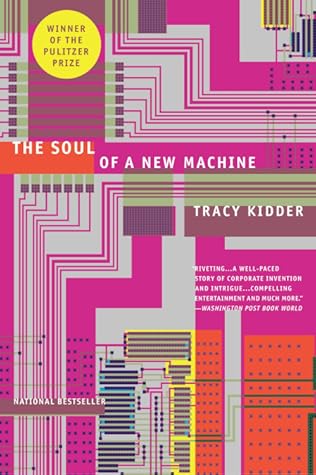More on this book
Community
Kindle Notes & Highlights
The ocean doesn’t care about you. It makes your boat feel tiny. The oceans are great promoters of religion, or at least of humility—but not in everyone.
It became apparent that communications and computing served each other so intimately that they might actually become the same thing;
IBM virtually resided there. Everyone sued IBM, it seemed. The biggest suit, the Jarndyce v. Jarndyce of the industry, involved the Justice Department’s attempt to break up IBM. Virtually an entire large law firm was created to defend IBM in this case, which by 1980 had run ten years and had been in continuous trial for several.
Obviously, they did not manage every side of their business better than everyone else, but these young men (all equipped with large egos, as one who was around them at this time remarked) somehow managed to realize that they had to attend with equal care to all sides of their
operation—to the selling of their machine as well as to its design, for instance. That may seem an elementary rule for making money in a business, but it is one that is easier to state than to obey. Some notion of how shrewd they could be is perhaps revealed in the fact that they never tried to hoard a majority of the stock, but used it instead as a tool for growth. Many young entrepreneurs, confusing ownership with control, can’t bring themselves to do this.
IBM and other mainframe companies spent more money selling their products and serving their customers than they did in actually building their machines. They sold their computers to people who were actually going to use them, not to middlemen, and this market required good manners. Microcomputer companies sold equipment as if it were corn, in large
quantities; they spent most of their money making things and competed not by being polite but by being aggressive.
Executives might make the final decisions about what would be produced, but engineers would provide most of the ideas for new products. After all, engineers were the people who really knew the state of the art and who were therefore best equipped to prophesy changes in it.
By the mid-1960s, a trend that would become increasingly pronounced was already apparent: while the expense of building a computer’s hardware was steadily declining, the cost of creating both user and system software was rising. In an extremely bold stroke, IBM took advantage of the trend. They announced, in the mid-sixties, all at one time, an entire family of new computers—the famous 360 line. In the commerce of computers, no single event has had wider significance, except for the invention of the transistor. Part of the 360’s importance lay in the fact that all the machines in the family
...more
Much of the engineering of computers takes place in silence, while engineers pace in hallways or sit alone and gaze at blank pages.
Among engineers generally, the most common form of ambition—the one made most socially acceptable—has been the desire to become a manager. If you don’t become one by a certain age, then in the eyes of many of your peers you become a failure.
Not Everything Worth Doing Is Worth Doing Well.
Asked for a translation, he smiled and said, “If you can do a quick-and-dirty job and it works, do it.”
such thing as a perfect design. Most experienced computer engineers I talked to agreed that absorbing this simple lesson constitutes the first step in learning how to get machines out the door. Often, they said, it is the most talented engineers who have the hardest time learning when to stop striving for perfection.
Most engineers, I think, consider themselves to be professionals, like doctors or lawyers, and though some of it clearly serves only the interests of corporations, engineers do have a professional code. Among its tenets is the general idea that the engineer’s right environment is a highly structured one, in which only right and wrong answers exist. It’s a binary world; the computer might be its paradigm. And many engineers seem to aspire to be binary people within it. No wonder. The prospect is alluring. It doesn’t matter if you’re ugly or graceless or even half crazy; if you produce right
...more
"Among its tenets is the general idea that the engineer’s right environment is a highly structured one, in which only right and wrong answers exist"
The last part of this statement is highly debatable. I believe that, sometimes, engineers have to make a choice between competing options, where each option has merits and demerits in equal measure.
“It doesn’t matter how hard you work on something,” says Holberger. “What counts is finishing and having it work.”
But clearly, for even the most potentially interesting jobs to be meaningful, there must be managers who are willing to throw away the management handbooks and take some risks.
Eagle appeared to be a fairly uninteresting computer to build. Yet more than two dozen people worked on it overtime, without any real hope of material rewards, for a year and a half; and afterward most of them felt glad. That happened largely because West and the other managers gave them enough freedom to invent, while at the same time guiding them toward success.
“That’s the bear trap, the greatest vice. Your job. You can justify just about any behavior with it. Maybe that’s why you do it, so you don’t have to deal with all those other problems.”


